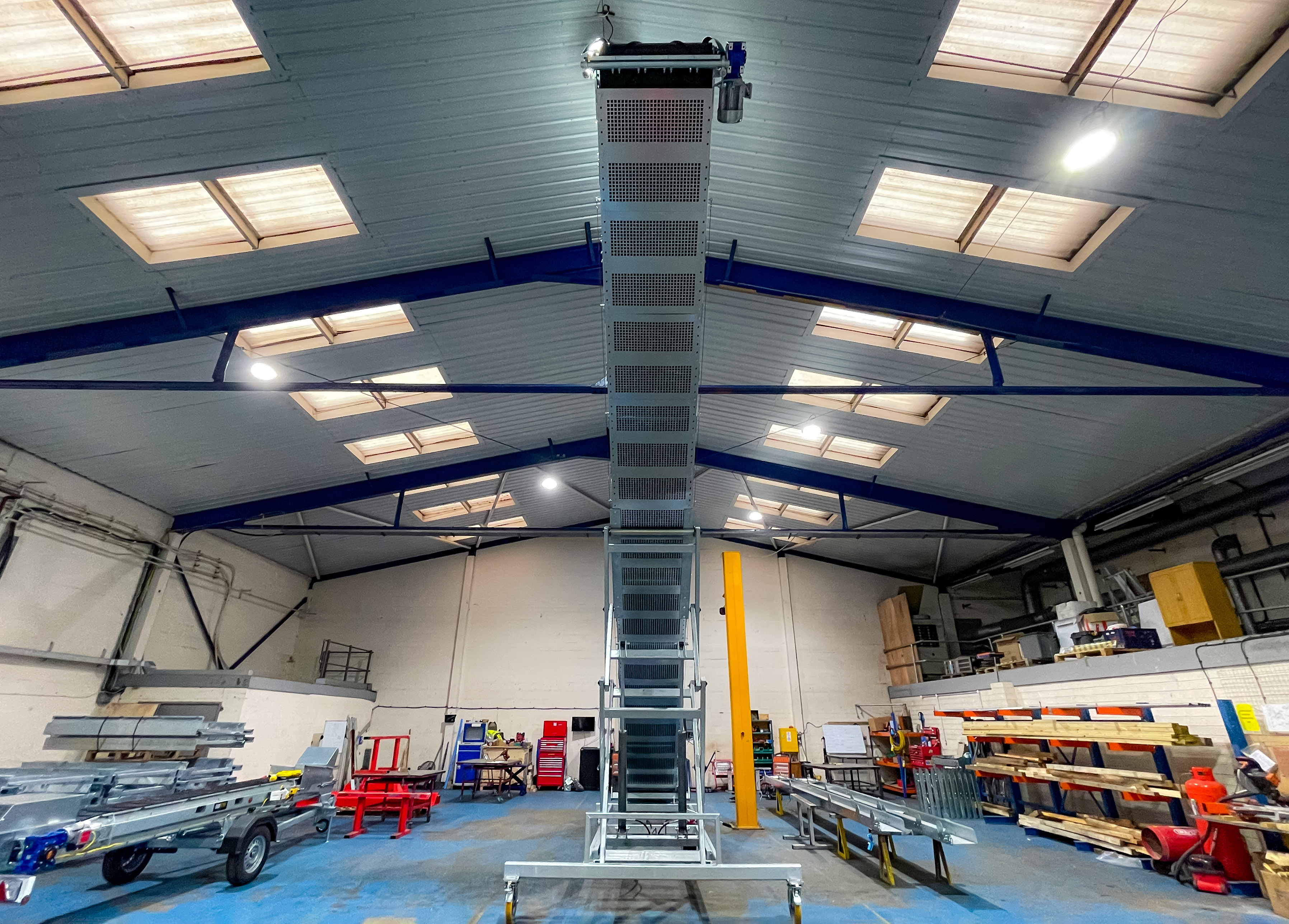- Amanda
- October 3, 2018
Rise & Decline: How steep can a conveyor go?

Although a conveyor can work at any angle – even vertically – whether it’ll actually move material is another matter
It’s common sense that a conveyor at a very steep upward angle will struggle, since the material will fall back down to the bottom. In general, the steeper the angle, the smaller the amount of material that can be carried up.
A rule of thumb
- With a plain belt (with no protrusions) we usually say the maximum angle is 20°.
- If you need to go steeper than that then a 15mm chevron pattern belt will take you up to 32°.
- If you need to go still higher than that, a troughed and flighted belt can go up to 45° for ordinary excavated material.
Mind the lumps
The above rules of thumb for chevron pattern, troughed and flighted belts assume you have relatively small lumps of material. As lumps get larger, you get to a size that’s so big and heavy that the material will roll over the chevrons as if it’s a plain belt. In which case the 20° maximum applies.
Spherical objects can also pose a problem so we factor that in when we’re specifying the right conveyor for a job.
Motor size
Depending on the angle of the conveyor, you might need to increase the size of the motor to cope with the extra load. When we specify a conveyor for a job, we take into account the friction, speed, load and other factors (with a good safety margin) to determine the motor you’ll need.
Loading a steep conveyor
Always bear in mind, the steeper the conveyor the more carefully you need to load it. If it’s very steep, it’s often necessary to slow down the conveyor so the material doesn’t bounce out of the hopper when it’s poured in. It’s also more important than ever to start the conveyor empty to avoid overloading the motor.
If your job needs a steep conveyor, we’ll advise you on the best way to load it for your specific application.
What about downhill?
If you’re conveying dry soil slightly downhill, it’ll probably be fine. However, if you’re talking about larger material like rubble, aggregate or lumps of clay, and it’s got to go down a steep slope, we’ll tell you it’s a bad idea.
You see, if rocks and rubble start rolling downhill on the belt while it’s moving, the material will simply accelerate towards the end of the conveyor. If there are people anywhere near the equipment, it’s an accident waiting to happen so we’ll always advise against it.
How can I know if a conveyor will work on my site?
The easiest way is just to ask us to come and look. We offer all our customers a free site survey where we can give you the benefit of our years of experience. If we’re not sure, we’ll come back to our office, draw it up and work it out. We don’t take chances.
We also offer all our customers a guarantee – if you’re not happy then we won’t charge you.
Get in touch
If you’d like to talk to us about a job you need a conveyor for, or arrange a free site visit, please get in touch.


